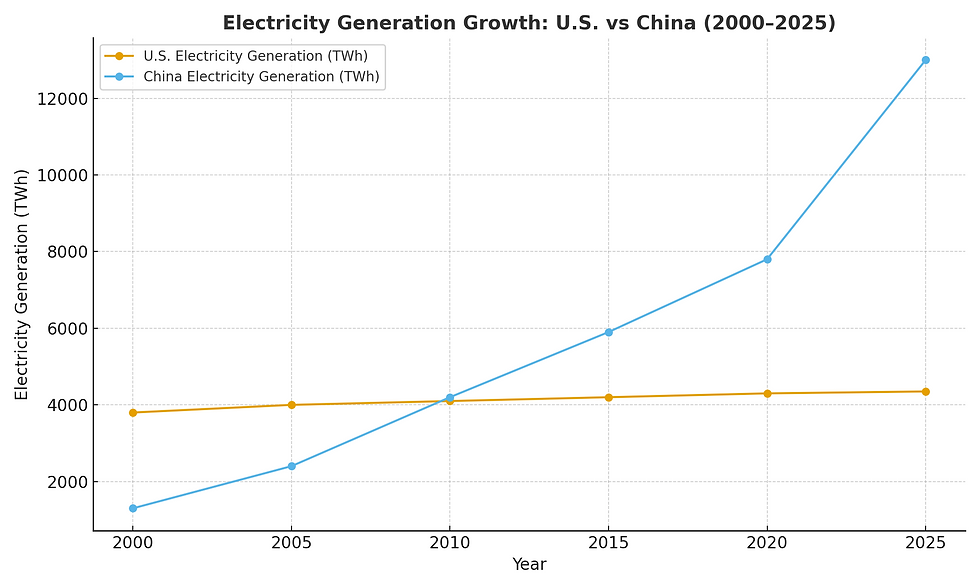The New Currency of AI — Are You Prepared?
- mwilliams831
- Sep 24
- 2 min read
Updated: Sep 28

Last week, the landscape of AI infrastructure shifted dramatically. OpenAI and NVIDIA unveiled a partnership to build what may become the largest compute cluster in history, a project internally codenamed Stargate and projected to cost up to $100 billion (Business Insider).
At the same time, Elon Musk set a bold ambition: his company xAI will grow its compute footprint to 1 GW, then 10 GW, 100 GW, and ultimately a terawatt — scaling at each stage as though adding multiple nuclear power plants to the grid (TechCrunch).
Sam Altman describes this future as “abundant intelligence” — where factories produce a gigawatt of new AI infrastructure every week (Business Insider).
The message from Musk, Altman, Greg Brockman, and Jensen Huang is clear: we are not at the peak of AI, but at the bottom of the curve — scaling three orders of magnitude higher.
The Real Constraint: Power & Infrastructure
Here’s the reality:
Flat U.S. power production vs. exponential China growth — U.S. electricity generation has remained roughly flat since the early 2000s, while China’s electricity output has grown 10× over the past 25 years (EIA).

Surging demand from data centers — Goldman Sachs projects a 160% increase in U.S. power demand from AI and cloud data centers by 2030 (Goldman Sachs Research).
Regulatory bottlenecks — Musk’s planned Colossus 2 (1.1 GW AI campus) only advanced after regulators granted temporary turbine approvals (TechCrunch).
Scaling to 10 GW or 100 GW of AI compute won’t be achieved with incremental upgrades. It requires entirely new power systems, novel data center models, and global supply chain innovation.
Why This Matters
The most significant bottleneck for AI’s future isn’t chips or algorithms — it’s power.
Even in the OpenAI–NVIDIA deal, analysts highlighted that “a huge hurdle [is] to get access to power” to operate the next wave of data centers (Business Insider).
In short: the new battleground in AI is not how fast models can train — but how much clean, scalable, and high-capacity electricity can be delivered to fuel them.
AI’s new currency is power. The question is: are we ready for the scale that’s coming?



Comments